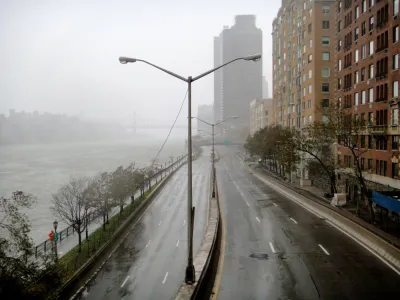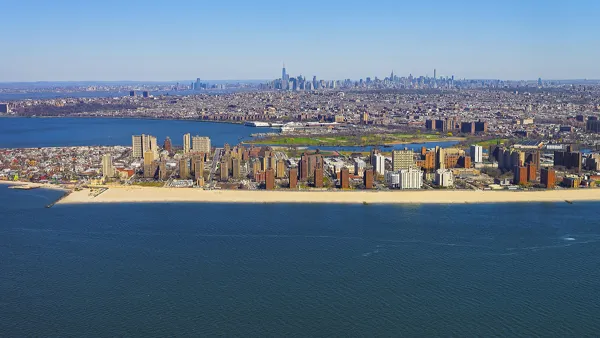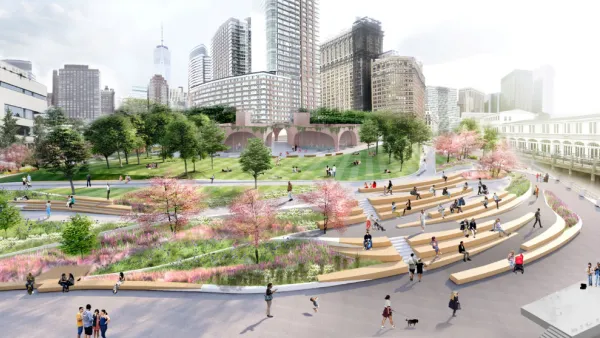A debate over how to protect the East River waterfront from Sandy-level flooding and storm damage has delayed the project as community activists decry the city's last-minute change of plans.

After Hurricane Sandy devastated Lower Manhattan in 2012, a federal grant competition sought out resilience projects that would protect East River Park and the surrounding neighborhood from future storms and flooding. A major recipient was a plan called the BIG U, which proposed natural barriers and berms that would allow occasional flooding and protect buildings. But rather than going ahead with the project, writes Michael Kimmelman, the city pulled the plug in 2018, citing cost concerns and proposing an alternate plan that would raise the coastline by adding more landfill instead.
Kimmelman outlines the history of East River Park and the public housing developments dotting the East River waterfront, and describes the community activists working to develop resilience plans for the area. After years of public consultation, the city's decision to change the proposed plan at the last minute and disregard community input has led to a contentious debate over the future of the area. The controversy divided the community and slowed progress on essential infrastructure needed to protect local residents and buildings.
Kimmelman describes the situation as a tension between community input and perceived expertise, between the inclusion of all voices and the urgent need for flood mitigation measures. After multiple delays due to lawsuits, design changes, and the pandemic, the city is moving forward with its new plan, scheduled for completion in 2026. The new levee is projected to protect the neighborhood until 2050.
You can also listen to the article on The Daily podcast.
FULL STORY: What does it mean to save a neighborhood?

National Parks Layoffs Will Cause Communities to Lose Billions
Thousands of essential park workers were laid off this week, just before the busy spring break season.

Retro-silient?: America’s First “Eco-burb,” The Woodlands Turns 50
A master-planned community north of Houston offers lessons on green infrastructure and resilient design, but falls short of its founder’s lofty affordability and walkability goals.

Delivering for America Plan Will Downgrade Mail Service in at Least 49.5 Percent of Zip Codes
Republican and Democrat lawmakers criticize the plan for its disproportionate negative impact on rural communities.

Test News Post 1
This is a summary

Test News Headline 46
Test for the image on the front page.

Balancing Bombs and Butterflies: How the National Guard Protects a Rare Species
The National Guard at Fort Indiantown Gap uses GIS technology and land management strategies to balance military training with conservation efforts, ensuring the survival of the rare eastern regal fritillary butterfly.
Urban Design for Planners 1: Software Tools
This six-course series explores essential urban design concepts using open source software and equips planners with the tools they need to participate fully in the urban design process.
Planning for Universal Design
Learn the tools for implementing Universal Design in planning regulations.
EMC Planning Group, Inc.
Planetizen
Planetizen
Mpact (formerly Rail~Volution)
Great Falls Development Authority, Inc.
HUDs Office of Policy Development and Research
NYU Wagner Graduate School of Public Service





























